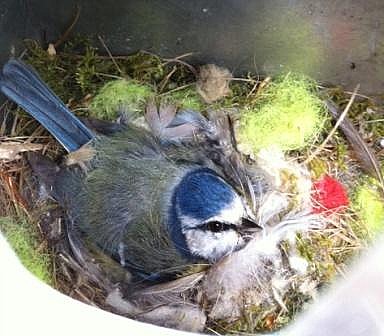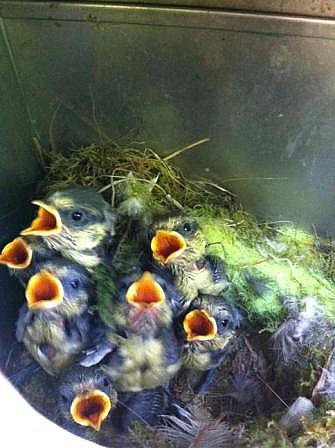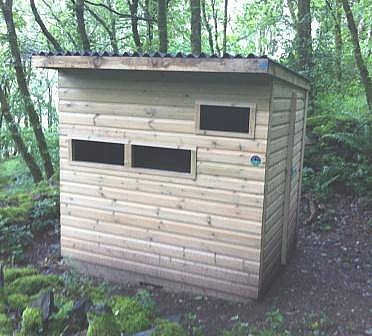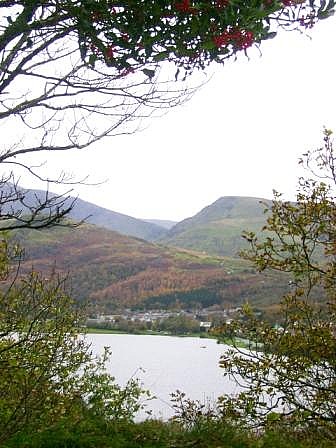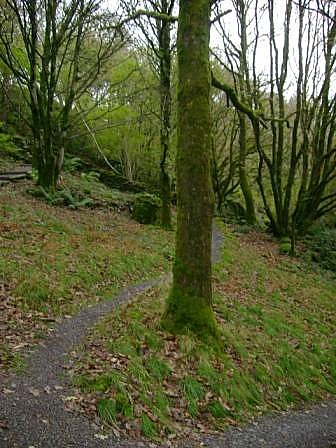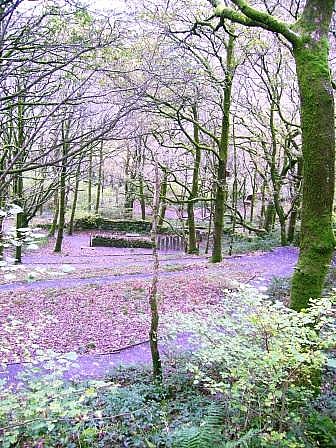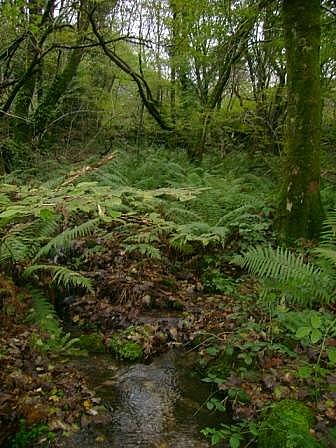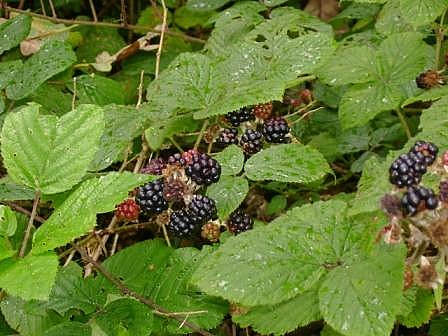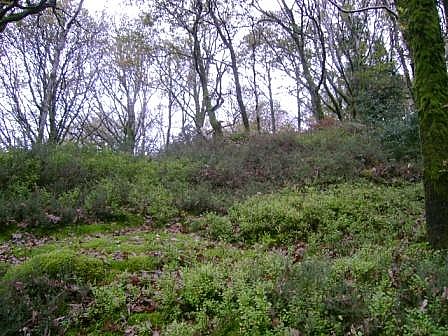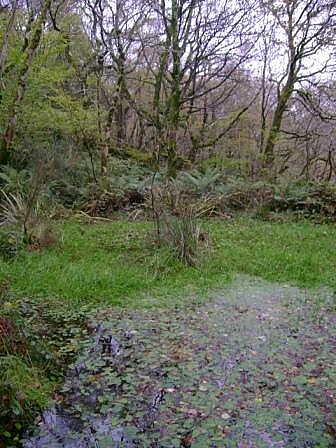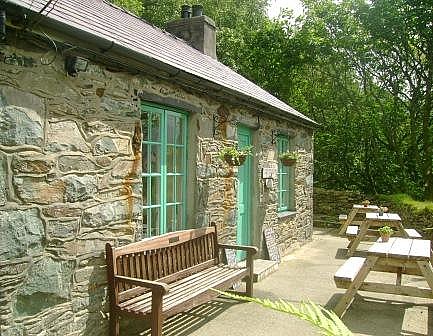
CONSERVATION AT CWM DERWEN, FACHWEN
January 2013
Following our unexpected guests last spring (see below for more details), we have been successful in obtaining a grant from Environment Wales to purchase bird houses and bird feeders with integrated cameras, and a TV so that we can see the birds, in their natural habitats without disturbing them.
The cameras are connected to the TV which is situated in our cafe, this will allow us and our customers to view the birds, their eggs and chicks.
In the spring of 2012 we had an unexpected Blue Tit lodger who had made a nest for herself in one of our disposal units.
We were all excited with our new friend and mum to be.
Above is a picture of a busy mum, attending to her brood of 8 babies.
Above, the hungry babies waiting for mum.
By the end of Spring mum and babies had all left the nest. We hope that they have found a suitable new home in one of our many bird boxes in our woodland at Cwm Derwen.
~~~~~~~~~~
***NEW*** We now have 2 bird hides in our Cwm Derwen woodland. Next time, bring your binoculars and enjoy some bird and squirrel watching! *****
~~~~~~~~~~
The site covers an area of approximately 3.5 Ha (8 Acres of wooded hillside on the side of a glaciated valley on the north-eastern shore of Llyn Padarn near Llanberis
View of Llyn Padarn from Bryn Peris, Fachwen
Dominating the skyline to the south-east Snowdon, or to give it its proper name, Yr Wyddfa, is the highest peak in Wales at 1085m. Flanked on the left by the Llanberis Pass the effects of the last ice age are plain to see.
View of Snowdonia or Yr Wyddfa
Woodland
Sessile Oak, Brith and Sycamore predominate. Ash, Rowan, Willow, Holly, Bird Cherry and Wych Elm are also present. As woodland it is very young, with the trees around the boundaries tending to be of an older age than those in the middle. The land was abandoned in the '40's or '50's with the decline of the quarrying industry and the building of new council houses locally. Hazel, Hawthorn and Blackthorn form the shrubby layer.
GROUND FLORA
A variety of vegetation types can be identifed within Cwm Derwen, each with its own ground flora:-
Dry Woodland
Maintained pathways between dry woodland
Maintained paths leading down through dry woodland
Dry woodland moss
Dry woodland - located on the steeper ground the soil is thin and free draining. It supports a chick species-rich moss carpet, covering the ground, walls, boulders and dead tree trunks. Sweet vernal grass, creeping bent, celadine, bluebell, bramble and wood sorrel are prominent in the field layer and climbing plants such as honeysuckle and ivy are frequent on the trees.
Woodland Glade
Woodland glade - supports a number of grass species, bramble, bluebell, heather, gorse, bilberry, ferns, lesser celadine, wood sorrel, wood anemone, rosebay willow-herb, common violet, woodrush tormentil plus many others.
Wet Woodland
Wet woodland - where there is most shade the flora tends to be leggier and thinner. Sweet vernal grass and Yorkshire fog are the main grass species. There is lots of bramble but not as much ivy and honeysuckle. Many clump forming ferns, such as scaly male fern, lady fern, hard fern and buckler fern.
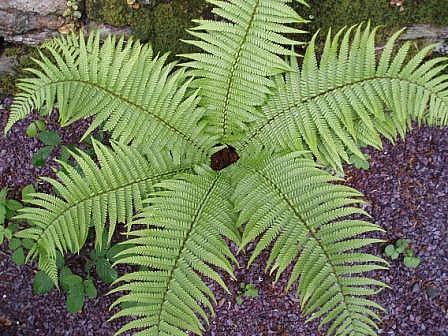
Fern
Bramble - blackberries
Wooded Heath
Wooded heath showing bilberry bushes
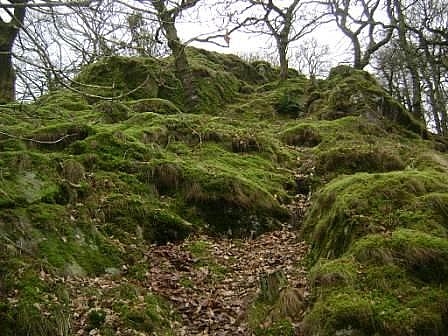
Wooded Heath - although it has the main characteristics of dry woodland there is a predominance of bilberry, wavy hair grass and gorse, common cow wheat is also present. Bramble is much reduced but there is an increase in the amount of bracken.
FAUNA
The woodland supports numerous species of birds, a thriving population of grey squirrel, also vole, wood mouse, bats, common lizard, slow worm, from and toad. A herd of feral goats visit regularly and there is also evidence of fox and badger but many other mammals may be expected. The diversity of its habitats would also indicate a rich invertebrate fauna.
Pond
Located about half way up the site, the pond was created by damming a small stream and letting plants and animals colonise it naturally. It supports a rich invertebrate fauna in the bottom litter, in the water, on, around and over the surface.
Species found include: nymphys and adults of mayfly, stonefly, damselfly, dragonfly, great diving beetle and various other beetles. Palmate and common newts, frogts and toads are also present.
Quarrying
Along with the rest of the surrounding area Cwm Derwen did not escape the attention of the slate industry. Chwarel Terfyn (Boundary Quarry) is the largest quarry hole on the site but several other trial digs can be found. The picnic site at Cei Llydan was formed by waste from the quarry and a derelict slate splitting shed can be found at about a quarter of the way up the site.
The Llanberis Lake Railway runs along the original track bed that took the finished slate from the Dinorwig Quarry in Llanberis to Y Felinheli (Port Dinorwig) and from there by sailing ships all over the world, especially the USA.
Padarn Cafe
Click here to go to Padarn Cafe's page.
Located at the top of the site is a small cottage. Originally a quarryman's home it was the first property to be developed by Menter Fachwen. Completely renovated it first housed the main first housed the main office, but subsequently became a cafe which serves drinks, home made cakes and snacks.
Bryn Peris Cottage as it is today
News

